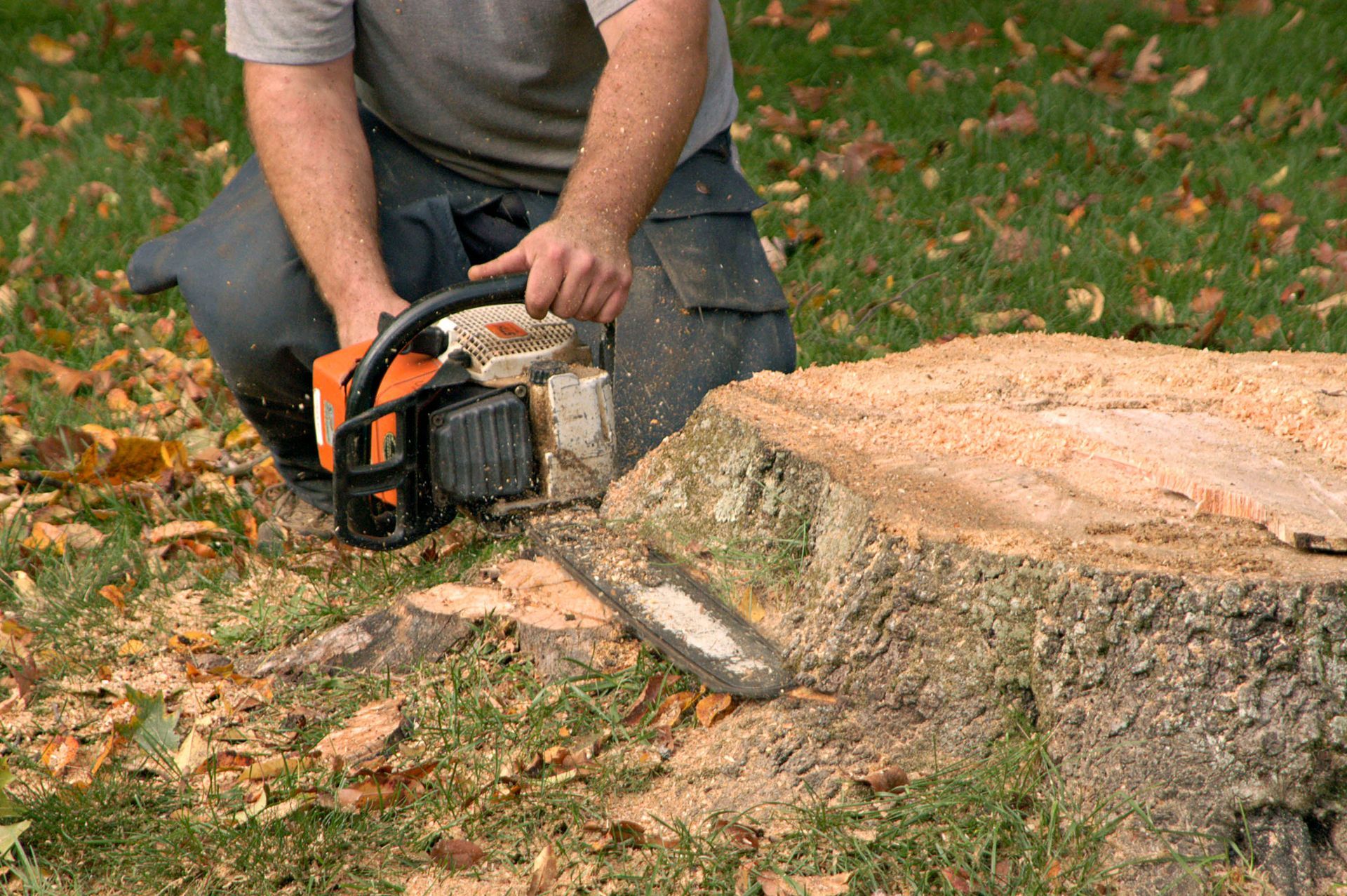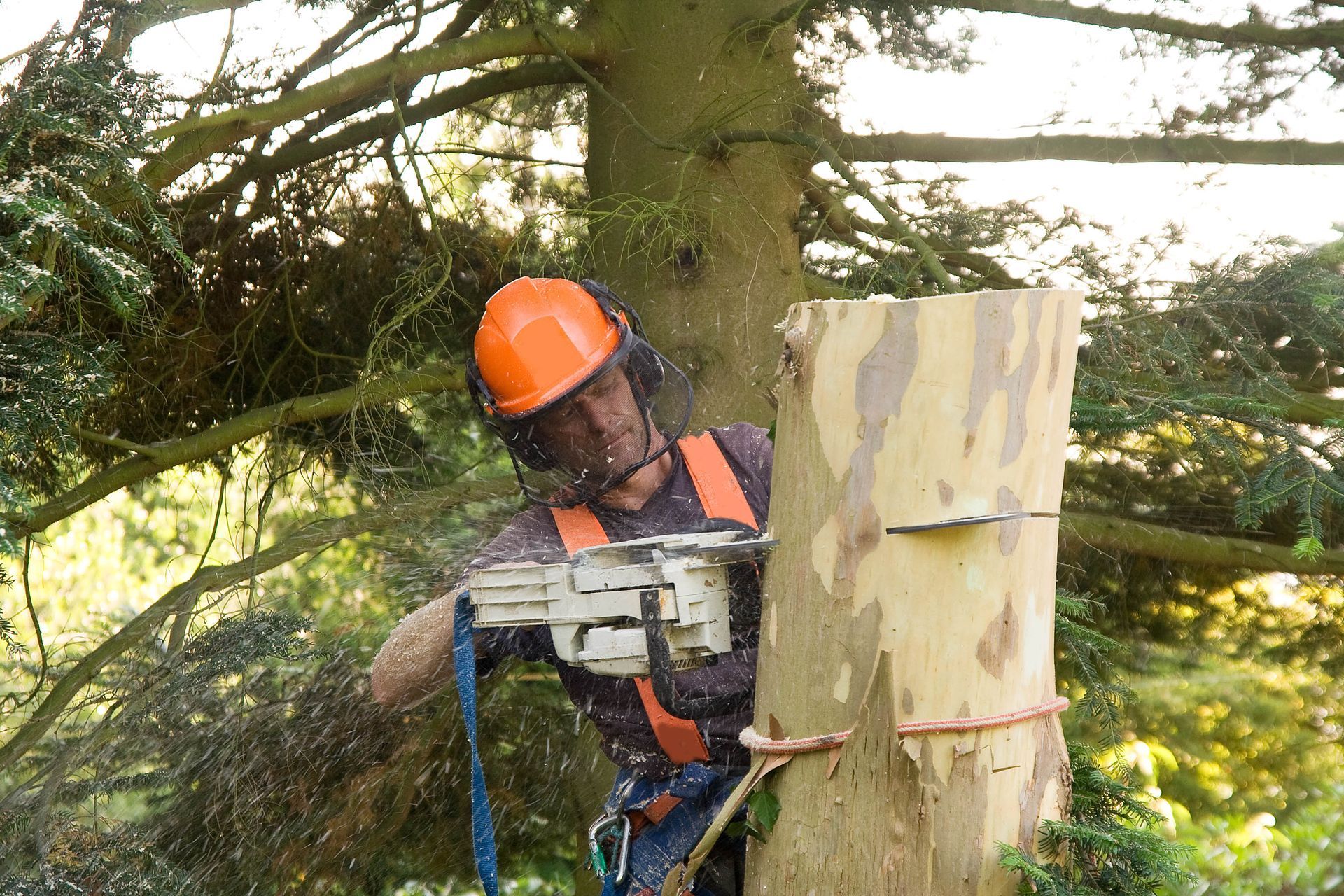August 19, 2025
Trees add shade, character, and value to a property, but when a tree becomes compromised, time works against you. Postponing removal can invite a cascade of problems, and each week of delay can increase safety risks and costs. This guide explains the less obvious hazards of waiting to invest in a tree removal service, how to spot warning signs, and why proactive action protects your home, your family, and your wallet.
Structural Failure Can Happen Without Warning
Compromised trees rarely fail on a neat schedule. Internal decay, root rot, and bark splits weaken load-bearing wood fibers, but those issues may be hidden behind healthy-looking bark. As fungi consume the interior, the trunk can lose strength while appearing stable. One strong gust, a heavy downpour, or an early snow can snap a weakened limb—or the entire trunk—causing sudden failure that’s far more dangerous than a planned removal.
Falling Limbs Threaten People, Pets, and Vehicles
Dead or dying branches can shear off with little wind. Hanging over driveways, walkways, or play areas, these limbs pose an everyday hazard. Even smaller branches can injure someone below or shatter windshields. The longer a hazardous limb stays overhead, the more exposure hours you rack up, compounding risk each day.
Roots Quietly Damage Foundations, Walkways, and Utilities
Delays at ground level are just as risky as delays overhead. Expanding roots can lift sidewalks, buckle asphalt, and create tripping hazards. In clay-heavy soils, roots may exploit microfractures in foundations, widening cracks and inviting water intrusion. Roots also seek moisture in sewer laterals, where they can infiltrate joints and cause blockages that lead to backups inside the home.
Storms Turn Minor Issues Into Emergencies
Weather events magnify every weakness. A tree that seems mostly okay in calm conditions can become a projectile factory during thunderstorms, hurricanes, or winter icing. An emergency tree removal service often happens at night or during active weather, requiring specialized equipment and larger crews. Those higher-risk conditions translate into higher costs and longer disruption compared to a planned daytime removal.
Pests and Disease Spread to Healthy Trees
Deadwood attracts wood-boring insects and fungi that don’t stop at one host. When you delay removal, you extend the pest’s life cycle and give it time to jump to healthy trees, creating a larger—and pricier—problem down the road. In neighborhoods with mature canopies, one infested tree can jeopardize an entire block, leading to widespread decline and unexpected replanting expenses.
Power Line Interference Raises Fire And Outage Risks
Trees growing into service drops or primary lines can abrade insulation, arc during wind events, and trigger outages or fires. Utilities may trim, but they won’t correct private-side structural problems. Waiting for a utility to notice is not a safety strategy; you’re still responsible for trees on your property that threaten lines, neighboring homes, or the public right-of-way.
Insurance Complications Multiply When You Wait
Insurers treat preventable losses differently than sudden, unforeseeable events. If an adjuster determines you ignored obvious hazards—dead limbs over a roof, a leaning trunk, or repeated arborist warnings—coverage may be reduced or denied. Documented maintenance and a timely tree removal service show you acted responsibly, strengthening any future claim and reducing out-of-pocket surprises.
Property Value Drops With Visible Decline
Potential buyers notice dead crowns, peeling bark, and heaving sidewalks. A hazardous tree becomes a negotiating chip against you, especially if the buyer’s inspector flags it. Proactive removal lets you control timing, choose the contractor, and present a tidy, safe landscape that supports curb appeal rather than undermining it.
Access Gets Harder, Which Drives Up Costs
A straightforward tree removal service can become a logistical puzzle if you wait. Seasonal growth of understory shrubs, pool installations, new fences, or additions can block equipment access. Without a clear path, crews may need cranes or complex rigging over structures, raising both the time and cost of the job. Acting early keeps the scope simple and the bill smaller.
Leaning Trees Become More Dangerous Over Time
Leans aren’t all equal. A tree that recently started leaning—especially after a storm—may have partially failed roots or soil heave. As tension builds on the compressed side and compression increases on the opposite side, fiber strength degrades. Every storm that passes puts more stress on a compromised system, reducing the margin for error and making controlled removal more challenging.
Hidden Cavities and Hollows Complicate Rigging
Experienced tree removal service climbers rely on predictable wood strength for safe cuts and lowering. Hollows or cavities can change how the tree carries load, forcing crews to rig lighter, take smaller sections, and make more cuts. That adds time, increases risk, and may require specialized gear. Early intervention—before advanced decay—keeps operations safer and faster.
Drainage and Soil Conditions Can Accelerate Decline
Poor drainage, irrigation overspray, or compacted soils reduce oxygen availability to roots, speeding decline in already stressed trees. When roots suffocate, the canopy thins, dieback spreads, and stability worsens. If you’ve changed grading, installed hardscape, or added lawn irrigation, the tree’s timeline may be shorter than you think.
Neighbors and Municipal Rules Still Apply
Overhanging hazardous limbs can spark neighbor disputes or lead to municipal citations if the tree threatens public sidewalks or streets. Some cities require permits for removals or mandate prompt action when a tree is deemed dangerous. Waiting can limit your options or add fines and compliance deadlines to an already urgent situation.
Cost Reality: Paying Now Costs Less Than Paying Later
While prices vary by tree size, access, and hazards, two factors consistently increase costs: emergency timing and complexity from advanced decline. Waiting often means paying a premium for after-hours response, cranes to avoid structures, or extra labor to handle brittle wood and unpredictable failures. Planned removals in favorable conditions keep budgets manageable.
How to Choose The Right Tree Service
According to IBISWorld, U.S. employment in the tree trimming industry grew at about 3.3% annually between 2019 and 2024. This means that there are plenty of tree removal service professionals to choose from! Look for a company with certified arborists, proper insurance, and recent references. Ask about their plan for your specific hazards, how they will protect nearby structures, and whether a crane is required. A clear, itemized estimate and proof of coverage signal professionalism. Don’t select purely on price; skill and safety training materially reduce your risk.
A Practical Timeline For Action
From the moment you notice red flags, schedule an assessment within a few days. For confirmed hazards, book removal within the next available window, ideally before the next major weather system. If permits are needed, start paperwork immediately to avoid administrative delays that could push work into storm season.
Peace Of Mind Comes From Acting Early
Prompt tree removal isn’t just an expense; it’s a risk decision. By addressing hazards before storms, line conflicts, or advanced decay, you protect people, preserve property value, and control costs. The dangers of delay are often hidden until the moment they’re not—when the limb falls, the sewer backs up, or the trunk splits. Acting now converts uncertainty into safety and a clear plan for your landscape.
If a tree shows signs of decline or poses a clear threat, hesitation raises both exposure and expense. A brief consultation with a qualified tree removal service professional can turn guesswork into clarity. When the assessment points to removal, move forward while the work is simpler, safer, and more affordable Here at Alpha 1 Tree Experts, our family-owned and operated business serves Willow Grove, PA and the surrounding areas with quality tree services. Call today to get started!


